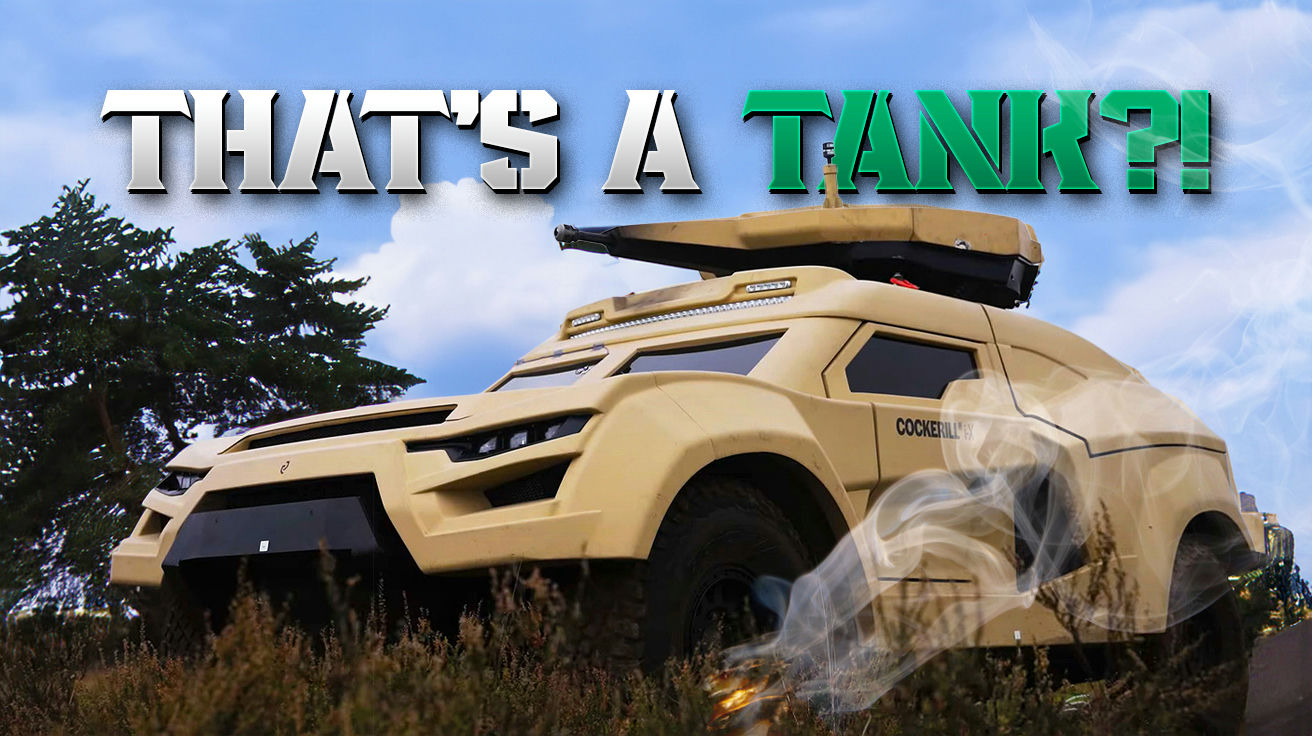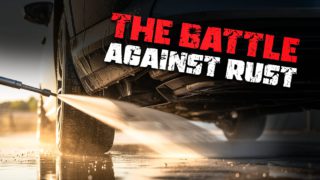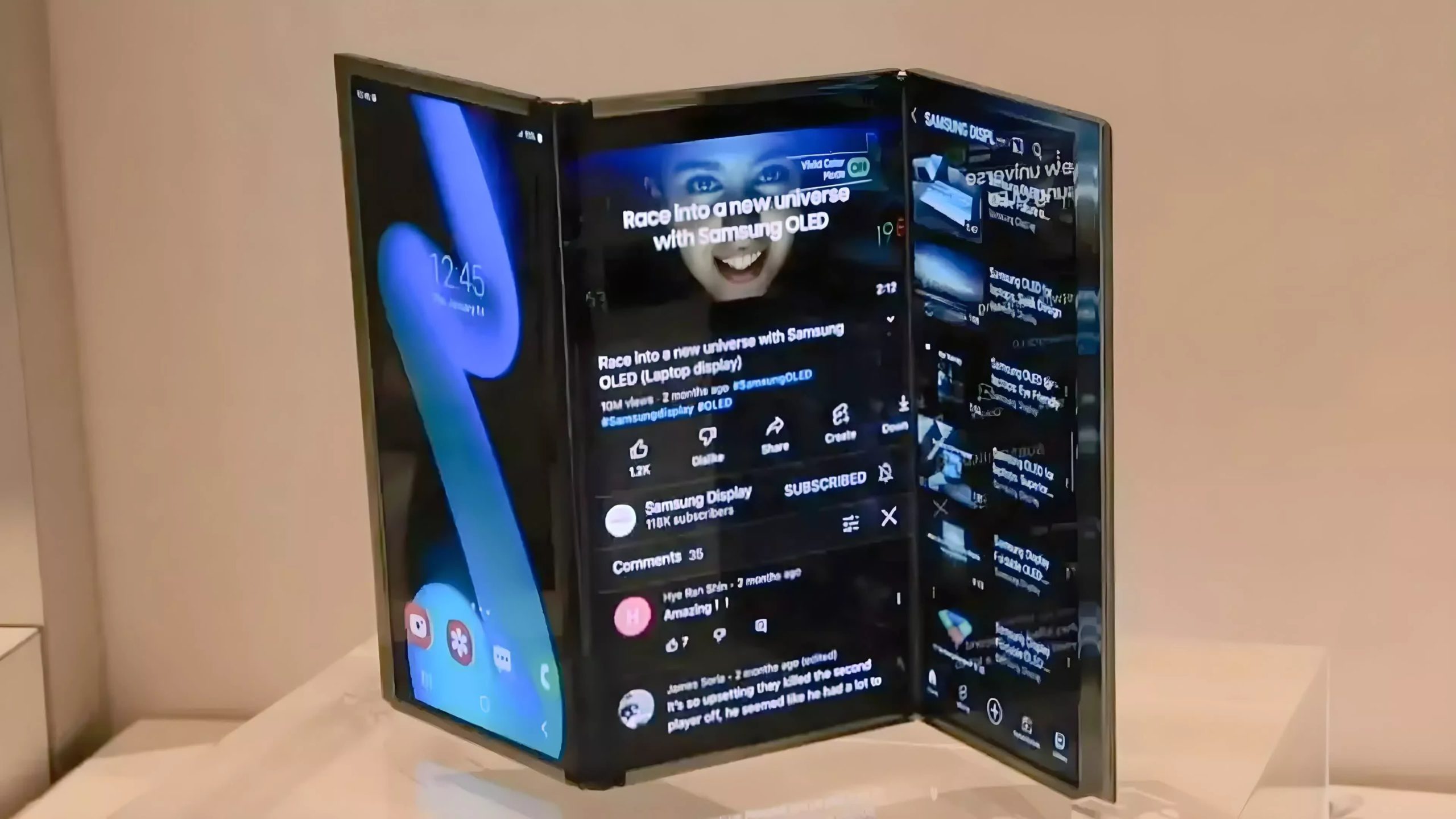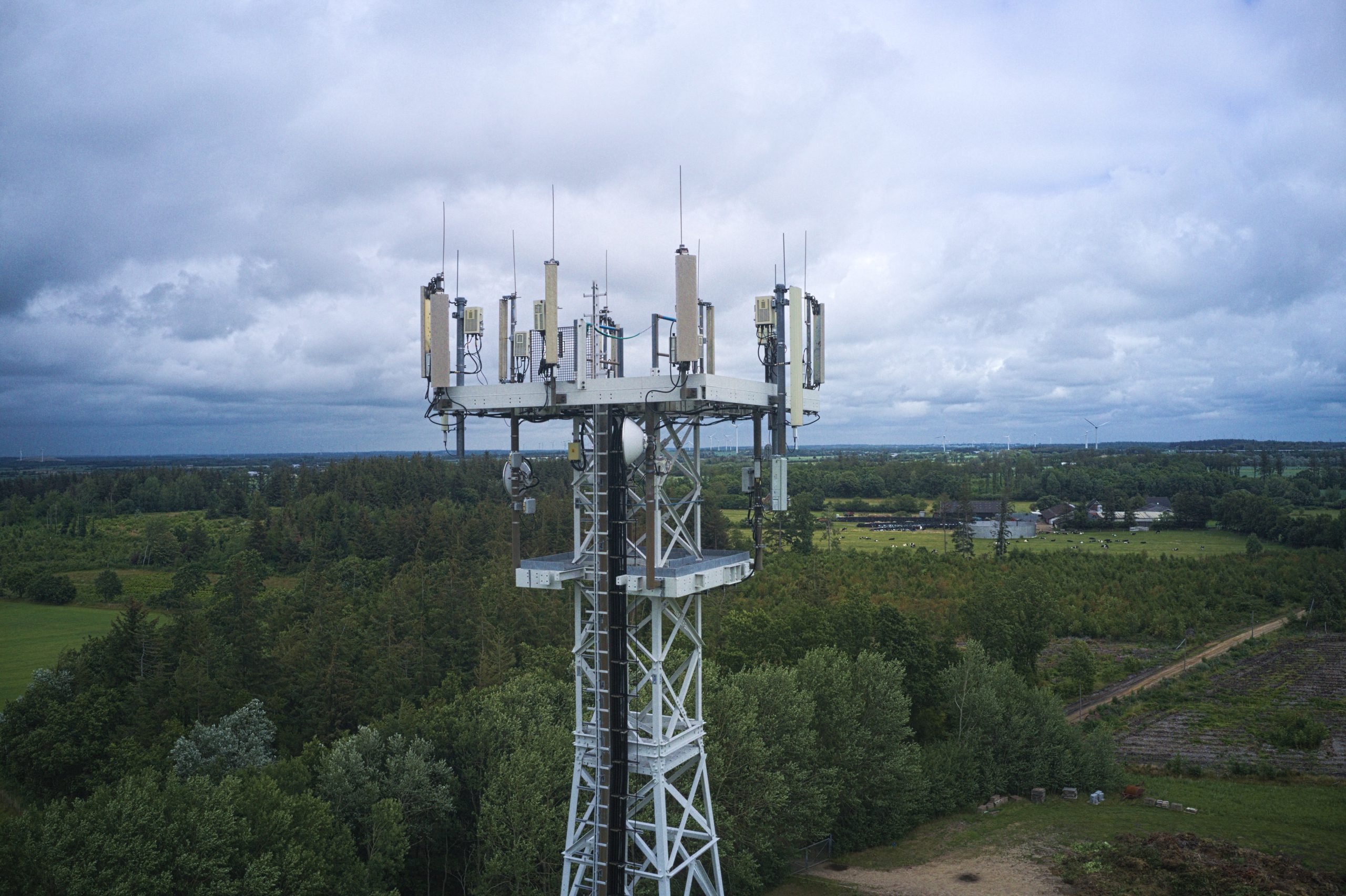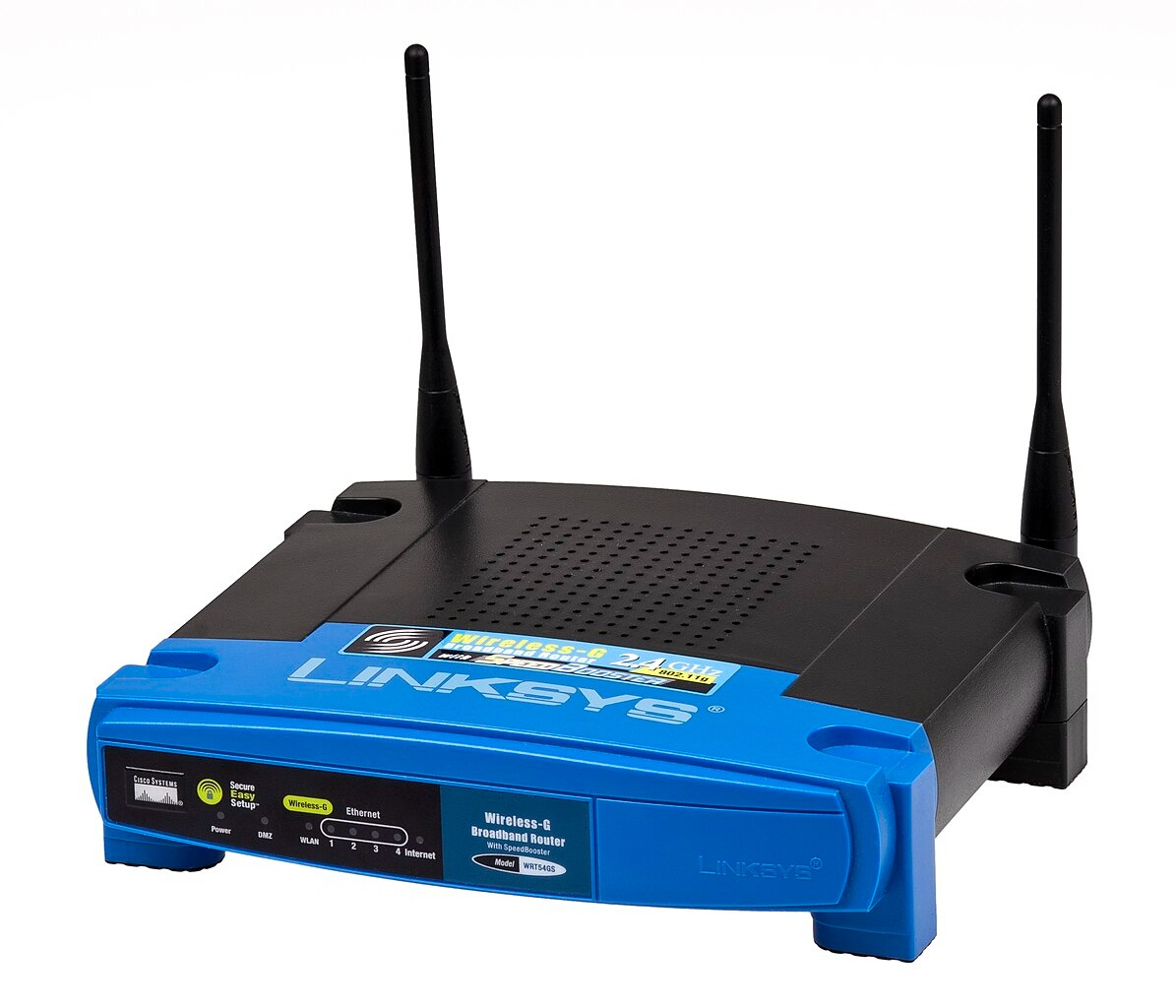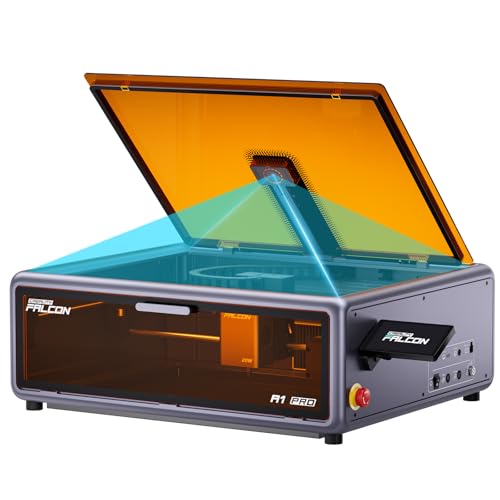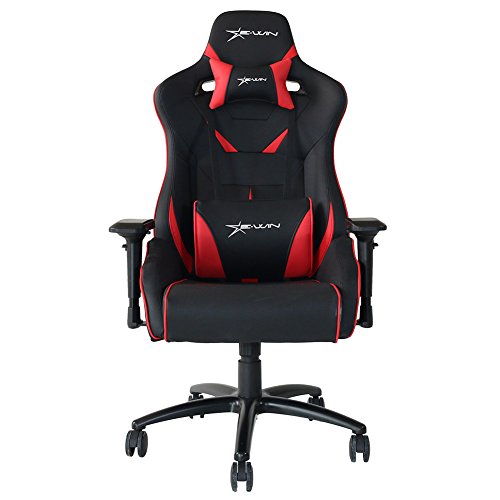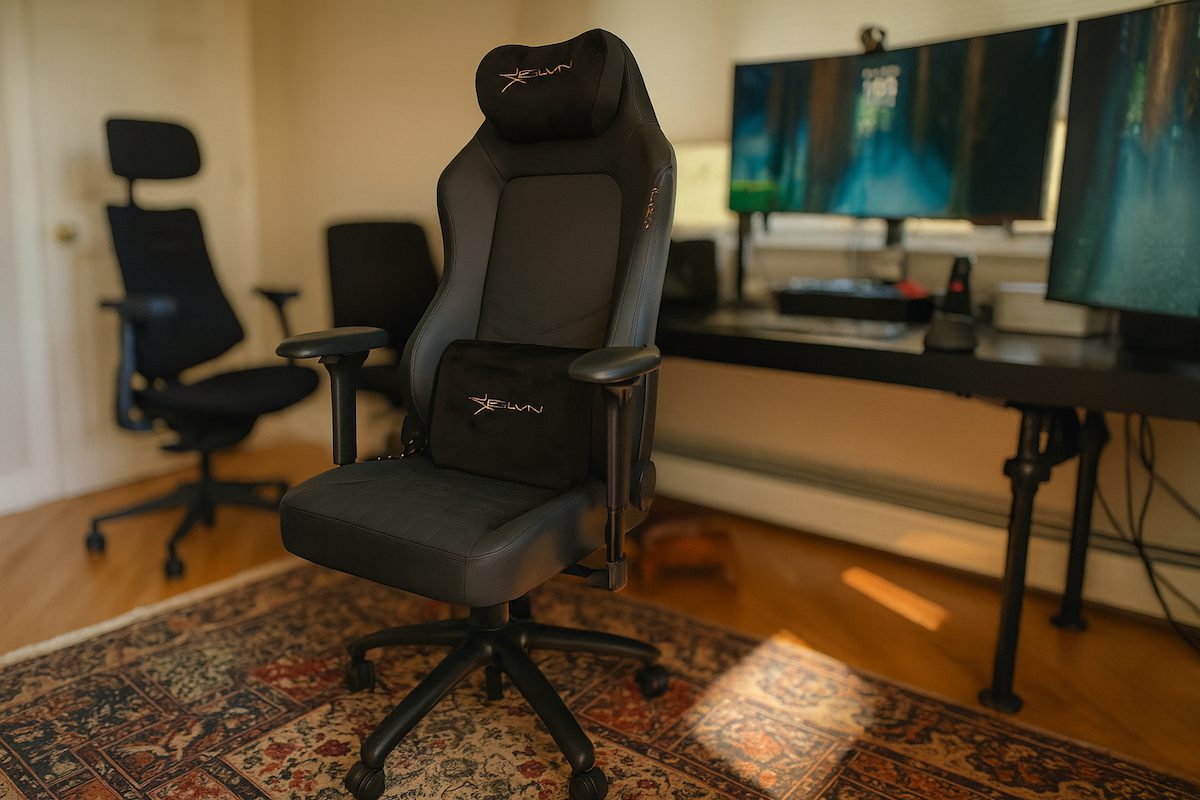Military vehicles aren’t just big toys with bigger price tags—they’re the backbone of modern combat operations where theory meets dirt and determines who controls what ground. While politicians debate strategy from air-conditioned offices, these steel beasts are out there combining raw power with intelligence systems that would make your smartphone look like a calculator watch from 1985.
From autonomous hunters that eliminate human risk to luxury armored vehicles that blur the line between protection and status symbol, these machines are rewriting the rules of engagement. Whether deployed in active conflict zones or serving as the ultimate insurance policy for those who can afford it, each vehicle tells a story of how warfare and security have evolved in an increasingly unpredictable world.
13. Cockerill i-X: The Chameleon That Bites (Exterior)

Traditional armor forces commanders to choose between firepower and mobility, but the Cockerill i-X eliminates that compromise entirely. This territorial defense platform packs 25-30mm autocannons and missiles in a modular setup reconfigurable faster than most people change their Netflix password. Currently being evaluated by multiple European defense forces, this Belgian-engineered marvel demonstrated its performance in NATO exercises where its rapid deployment impressed skeptical military observers.
Cockerill i-X: The Chameleon That Bites (Interior)

Advanced digital targeting mechanisms give operators precognitive abilities, while adaptive camouflage makes it invisible and hybrid thermal-electric engine delivers 800 horsepower at 200 km/h speeds. When stealth matters more than show, the Cockerill i-X rewrites battlefield rules completely and stands out among high-speed military vehicles.
12. LCAC 106: Beach Delivery on Steroids

This beast hauls 60-75 tons of cargo—including full-sized M1 tanks—from ship to shore at speeds that embarrass traditional landing craft. The U.S. Navy placed orders for dozens through their Ship-to-Shore Connector program, recognizing that modern amphibious operations demand speed and flexibility legacy mechanisms can’t provide. Recent Pacific humanitarian missions proved the concept when traditional landing craft would have taken hours longer to deliver critical supplies.
Coastal logistics change completely when you essentially erase barriers between sea and land operations, ensuring troops arrive ready to fight rather than exhausted from slow-motion surf slogs. If you’re planning amphibious operations, this machine delivers results when seconds determine mission success.
11. Polaris MRZR Alpha: Special Ops’ Favorite Ride (Exterior)

The MRZR Alpha’s off-road performance and adaptability make it a favorite for elite teams in unforgiving terrain—attributes every adventurer can appreciate in modern off-road vehicles.
Packing a 1.5L turbo diesel delivering 118 horsepower and 199 ft-lb torque in a package lighter than your cousin’s overloaded SUV, it carries 2,000 pounds across 300 miles without complaint. From Afghanistan to Somalia, its ability to fit inside V22 Osprey aircraft and sling-load under helicopters proved invaluable for rapid insertion missions.
The MRZR Alpha isn’t trying to be everything to everyone—it’s laser-focused on being exactly what special operations teams need when conventional vehicles would just get in the way. Deployment flexibility now defines the difference between mission success and dangerous exposure.
10. Rheinmetall Survivor R: The Ultimate Panic Room on Wheels (Exterior)

Trapped in hostile territory with no safe extraction route? The Survivor R converts lethal situations into manageable ones through superior defense and mobility. Built on a MAN truck chassis, this 4×4 houses 10 personnel behind advanced ballistic armor and CBRN defense mechanisms tested in the world’s most dangerous environments. European police forces deploy variants for high-risk operations, while military units appreciate communication features that maintain connectivity when conventional networks fail.
Rheinmetall Survivor R: The Ultimate Panic Room on Wheels (Interior)

Modular armor configuration adapts to threat levels while cutting-edge equipment ensures teams remain connected, creating a mobile fortress that brings its defensive bubble wherever missions demand. Survivability isn’t luck—it’s engineering that keeps teams breathing when everything goes sideways.
9. Buran 4×4: Russia’s Tactical Puzzle Box (Exterior)

Conventional vehicle layouts get predictable fast, but Russian engineers threw the rulebook out designing the Buran 4×4. Debuting at MAKS 2017 with engine up front, crew middle, and cargo rear—all shielded by armor stopping 7.62x51mm rounds—this unconventional approach reflects Russian doctrine prioritizing crew survivability over design conventions. Early deployment reports suggest the unusual layout enhances tactical effectiveness in urban environments.
Buran 4×4: Russia’s Tactical Puzzle Box (Interior)

Powered by an EMZ 53442 diesel reaching 100 km/h with 1,400 km range, three doors per side feature bulletproof windows and firing ports, proving function trumps form when lives depend on practical design choices. Russian pragmatism delivers results where aesthetics fall short and practicality saves lives.
8. Milrem Type-X: The Robot That Replaced the Rifleman (Exterior)

Autonomous warfare has become more efficient, with Estonian engineering leading the charge. The Type-X represents a fundamental shift in military tactics, bringing firepower, precision, and agility without risking personnel—like sending a champion boxer while you watch safely from home. Early NATO trials demonstrated performance exceeding expectations for unmanned ground vehicles.
Its hybrid electric drive delivers efficiency conventional vehicles can’t match, while modular design allows weapon setup changes faster than dinner decisions. Supporting mechanized units with reconnaissance and flanking maneuvers, the Type-X leads the robotics revolution into a future where dangerous jobs no longer require human lives. Combat effectiveness without casualties—that’s the Estonian advantage in modern warfare.
7. Mobile Communication Center MCC1: When Silence Isn’t an Option

Natural disasters turn cell towers into expensive lawn ornaments, making mobile communication centers the most valuable vehicles in affected areas. These units establish robust network frameworks creating reliable connectivity across environments that would normally be communication dead zones, handling everything from voice calls to data transmission. Recent natural disaster deployments proved their worth when traditional networks failed, with emergency responders crediting mobile command centers with saving lives through maintained coordination features.
They aren’t flashy—they don’t need to be—but when information flow determines success or failure, they’re the digital lifeline keeping coordination possible when everything else fails. Caught without communications during crisis? These mobile hubs ensure rescue operations maintain the connectivity that saves lives.
6. Roshel Senator APC: The Swiss Army Knife of Protection (Exterior)
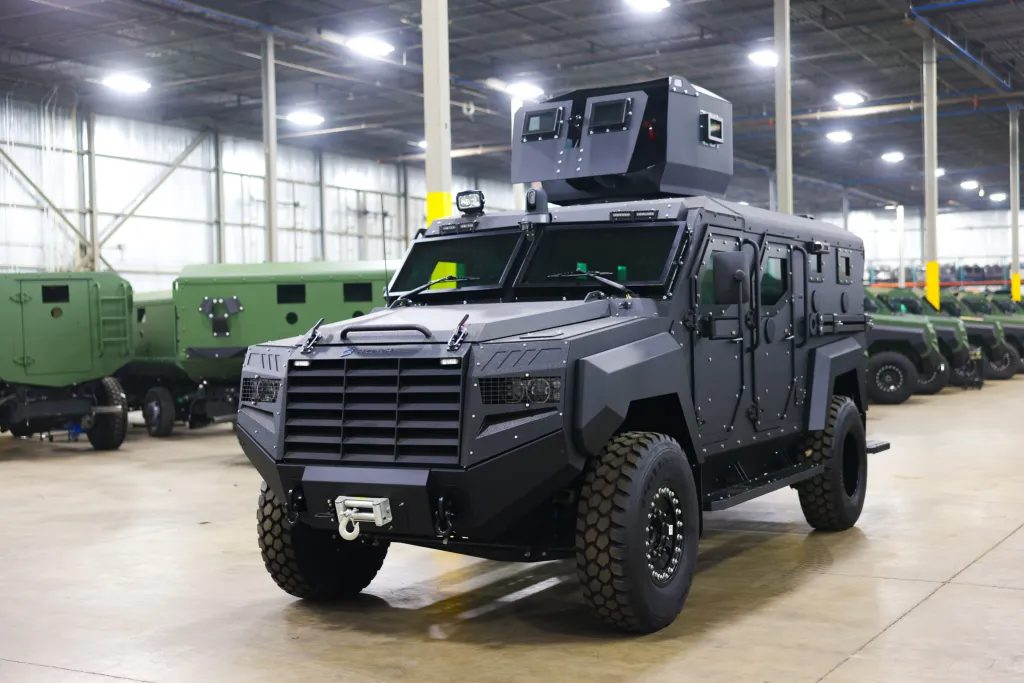
Starting with civilian foundations often produces the best military solutions, and the Senator APC proves this philosophy works. Built on a Ford F550 chassis, it wraps CEN B7 ballistic shielding in lightweight composite materials while maintaining mobility heavier vehicles can only dream about. Canadian forces deployed these vehicles in configurations from peacekeeping missions to domestic security operations, where adaptability proved more valuable than specialized single-purpose vehicles.
Roshel Senator APC: The Swiss Army Knife of Protection (Interior)
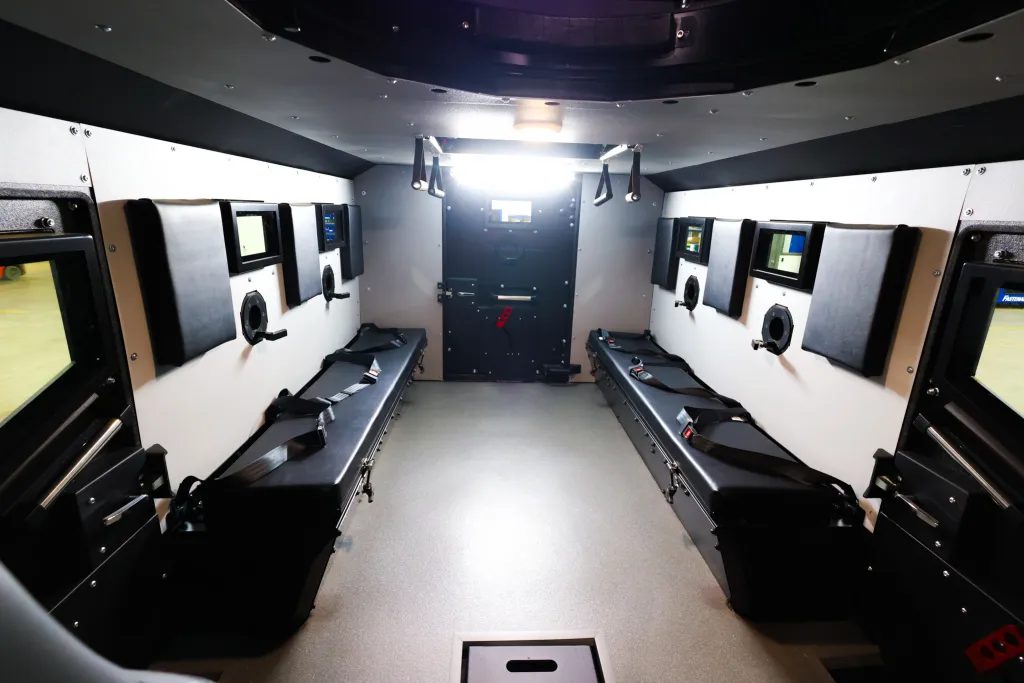
A 6.7L V8 diesel pushing 330 horsepower shifts this machine from medical evacuation to mobile command unit with minimal reconfiguration time, focused on being the most adaptable solution when missions demand flexibility over raw firepower. Multi-role adaptability beats single-purpose specialization when operational requirements change faster than deployment schedules.
5. Rezvani Tank: The Apocalypse-Ready Status Symbol (Exterior)
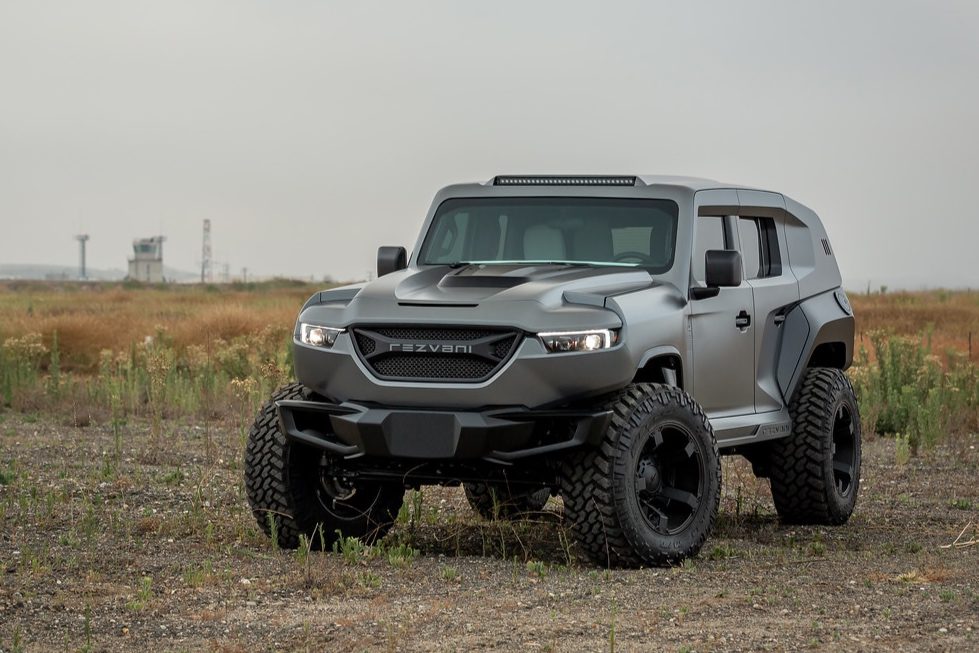
The Rezvani Tank answers the question nobody asked but everyone secretly wondered: “What if a military vehicle and luxury SUV had a very expensive baby?” With aggressive styling making standard SUVs look like grocery getters, it blends battlefield inspiration with boulevard presence perfectly. Celebrity buyers embraced the Tank as the ultimate combination of practical ability and conspicuous consumption, proving there’s a market for vehicles handling both red carpet arrivals and red zone evacuations.
Rezvani Tank: The Apocalypse-Ready Status Symbol (Interior)

Despite intimidating exterior, the cabin offers sophisticated comfort while navigating city streets with surprising grace. Paranoia has evolved into fashionable luxury, and the Tank proves survival readiness doesn’t require sacrificing style.
4. Rezvani Vengeance: Paranoia as a Luxury Feature (Exterior)

High-profile executives need defense that exceeds standard luxury vehicle features, and the Rezvani Vengeance delivers exactly that starting at $285,000. Powered by a 6.2L V8 with optional supercharging for those times when “fast” isn’t fast enough, it democratizes military-grade security previously available only to heads of state. Tech executives and entertainment figures discovered defensive measures that convert security concerns into rolling reality.
Rezvani Vengeance: Paranoia as a Luxury Feature (Interior)

The curved OLED dashboard with augmented reality navigation feels concept-car futuristic, while 360° cameras ensure nothing approaches unnoticed. The optional military package adds bulletproof glass, body armor, EMP shielding, smoke screens, and electrified door handles—features seeming excessive until they’re not. Security theater transforms into security reality for those who can afford the performance.
3. FNSS Kaplan Hybrid: Green Technology Meets Red Warfare (Exterior)

Sustainability mandates just got a 617-horsepower reality check with the FNSS Kaplan Hybrid. Combining a 400hp diesel engine with two PMSM electric motors while carrying a 56 kWh lithium-ion battery pack, this machine travels 20 km at 10 km/h in silent mode when stealth matters more than speed. Turkish forces began field testing this revolutionary propulsion approach, with early reports suggesting hybrid setups provide tactical advantages extending far beyond simple fuel efficiency.
FNSS Kaplan Hybrid: Green Technology Meets Red Warfare (Interior)

Maximum road speeds exceed 65 km/h with range beyond 525 km, while energy recovery during braking optimizes mission parameters better than conventional tracked vehicles, proving environmentally responsible destruction has never been so efficient. Green warfare technology proves that saving the planet and dominating battlefields aren’t mutually exclusive goals.
2. International Armored Group IAG Jaws: The Mobile Bunker (Exterior)
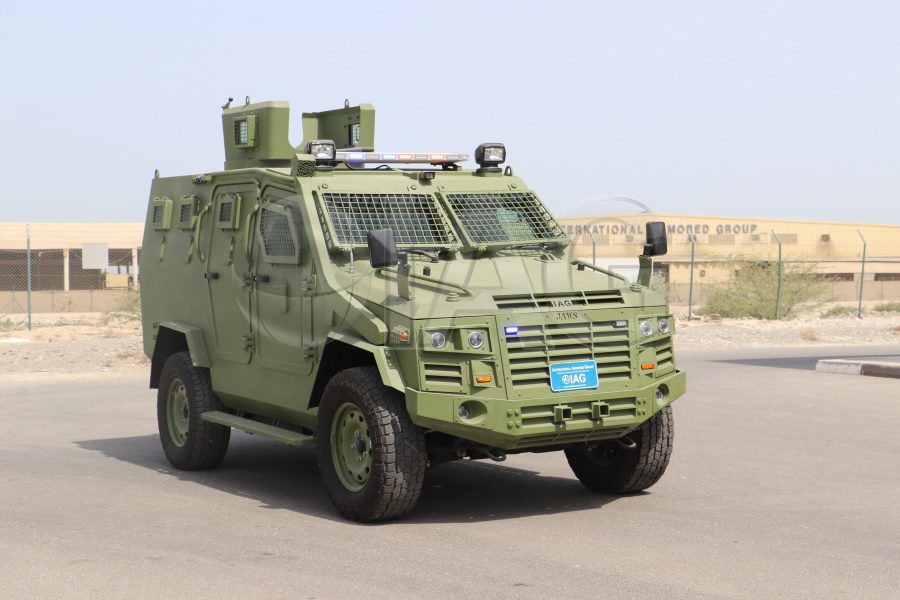
Conflict zones demand vehicles that absorb punishment while delivering personnel safely to objectives, and the IAG Jaws excels at exactly that mission. This high-mobility armored personnel carrier doesn’t pretend subtlety exists in its vocabulary, built on heavy-duty truck chassis with advanced ballistic shielding and powered by turbocharged diesel driving intelligent all-wheel-drive mechanisms. Proven in conflict zones where lesser vehicles become expensive targets rather than defensive assets, it houses eight troops in blast-resistant seats with gun ports for defensive functions.
International Armored Group IAG Jaws: The Mobile Bunker (Interior)
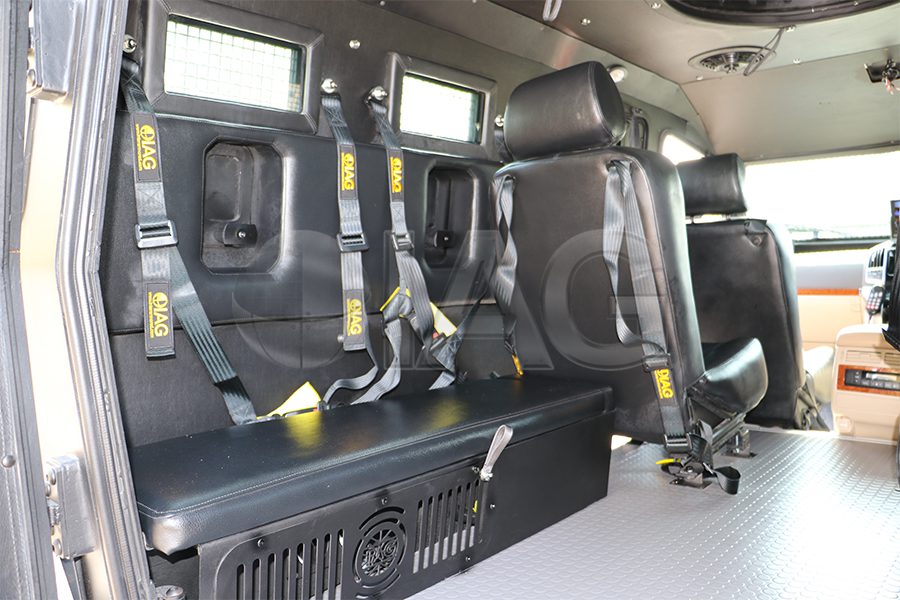
Comprehensive surveillance equipment creates defensive bubbles in environments where threats come from any direction, designed to survive confrontation while keeping everyone inside breathing. If you’re operating where “high-risk” is an understatement, the IAG Jaws delivers survival when subtlety won’t save lives.
1. GDLS TRX: Modular Mayhem

Tactical situations change faster than streaming service decisions, but the GDLS TRX adapts even quicker. This all-terrain tactical vehicle embodies the “adapt or die” philosophy through sheer engineering determination, combining robust construction with state-of-the-art technology in a modular package reconfigurable based on mission parameters. Military units across multiple branches praised the TRX’s ability to shift from logistics support to command vehicle to weapons platform depending on immediate tactical requirements, proving versatility often trumps specialization in complex operational environments.
Navigation features stopping conventional vehicles combined with mission adaptability makes it the battlefield’s ultimate problem solver, designed to be whatever commanders need when plans inevitably change mid-mission. Battlefield flexibility determines the difference between mission success and operational failure when adaptability controls the outcome.


